Ecuador's festivals provide unique glimpses into local culture and traditions. They have deep historical roots, spanning from the Spanish Colonial era and the Inca period to ancient agrarian customs. These diverse celebrations showcase Ecuador's rich religious, musical, and artistic heritage, offering a broad spectrum of festival experiences to cherish.

The Diablada festival in Píllaro, Ecuador is a unique and unforgettable experience. This annual event takes place during the first week of January, and it is a celebration of culture, music, and dance.
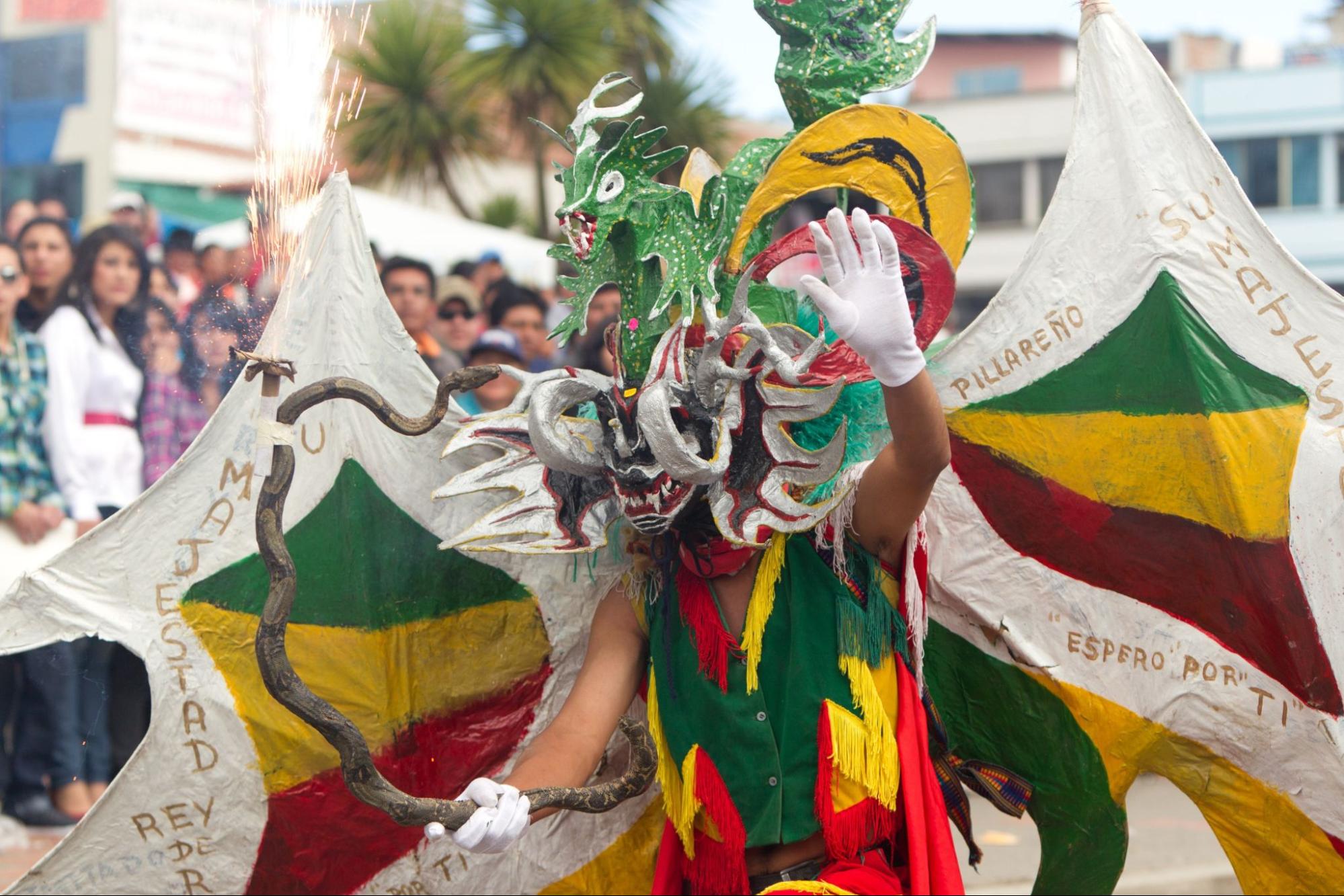
The Diablada is a traditional dance that revolves around the battle between good and evil. Dancers take on the roles of devils, angels, and animals, and they perform elaborate dances to the vibrant tunes of Ecuadorian music.
The festival is a showcase of Píllaro's rich cultural heritage. The streets of the town come alive with an explosion of colour, as locals and visitors come together to enjoy the festivities. There is food, drink, music, and dancing for everyone.
The Ecuadorian Carnival Festival, often referred to as the Ecuadorian Mardi Gras, is an annual extravaganza held in Ambato, a city nestled in the Central Highlands of Ecuador. Renowned as the largest celebration of its kind in the country and one of the most significant in South America, this festival is a vibrant spectacle that enchants all who partake in it.
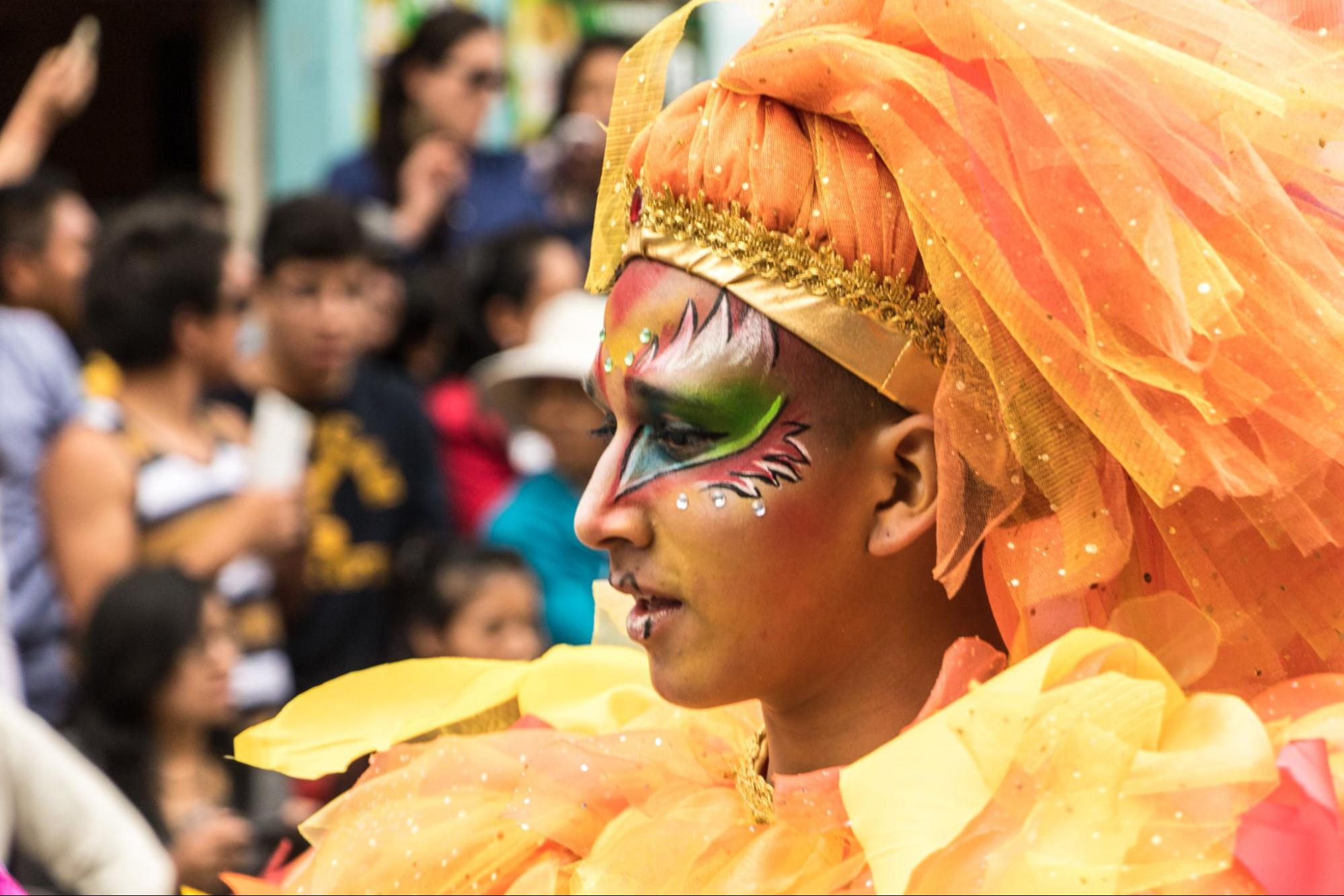
The festivities of the Ecuadorian Carnival Festival span a delightful two-week period, commencing on the Saturday just before Ash Wednesday in February and extending into March.
The festival commences with a grand parade that is nothing short of a visual spectacle, featuring majestic floats, spirited bands, and exuberant dancers. Following the parade, a festive feast is enjoyed by participants, where they savour the flavours of traditional Ecuadorian cuisine.
A poignant ceremony takes place in Ambato's main square, marked by the crowning of a statue of the Virgin Mary and an awe-inspiring fireworks display that lights up the night sky. As Ash Wednesday arrives on the Catholic calendar, the festivities reach their zenith with a grand procession that winds through the town.
Semana Santa, or Holy Week, is a time of great religious significance in Ecuador. It begins on Palm Sunday, when Christians celebrate Jesus' triumphant entry into Jerusalem. On this day, churches are filled with people waving palm branches and singing hymns.
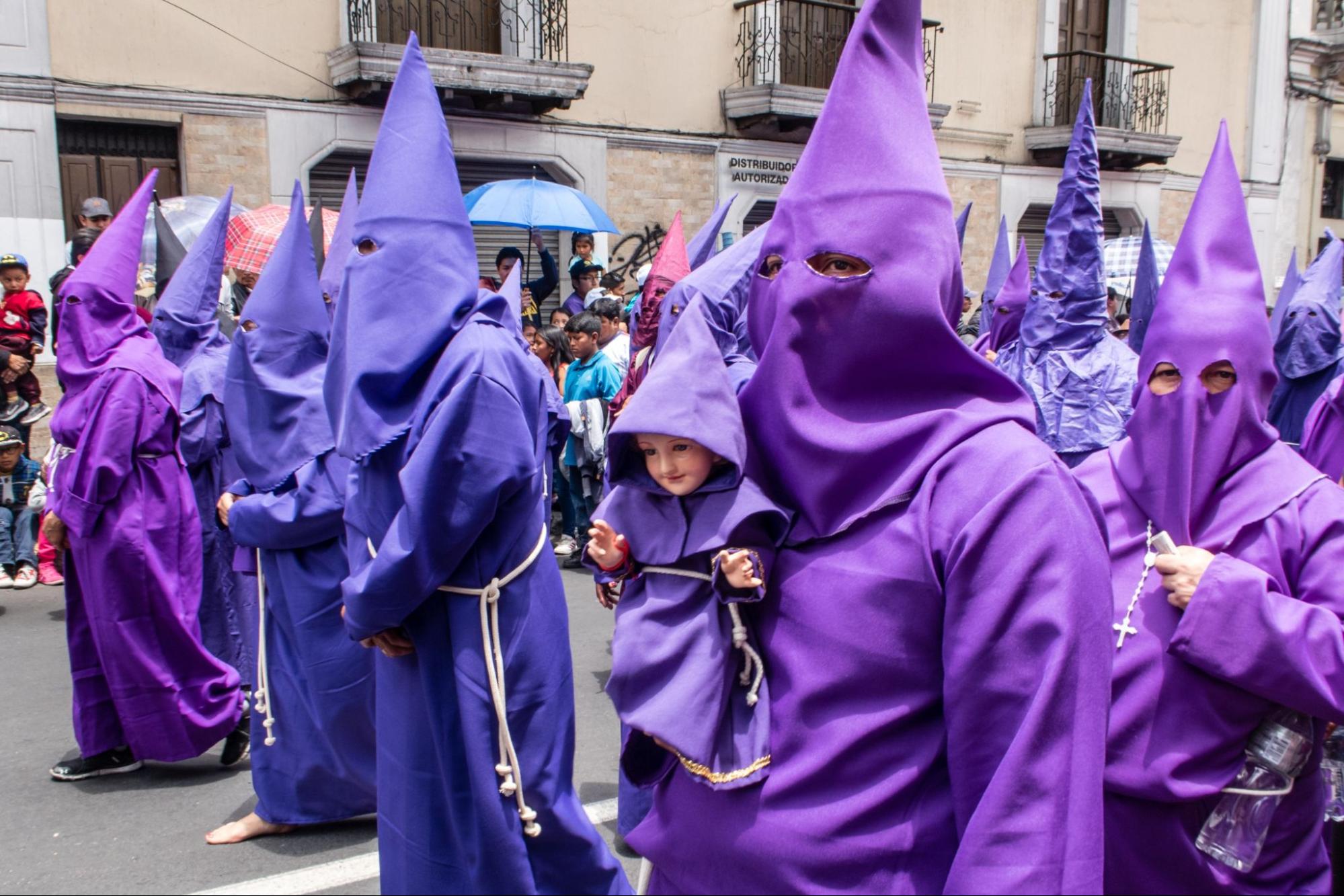
In the days leading up to Holy Thursday, Ecuadorians participate in a variety of religious activities, such as visiting churches, attending special masses, and fasting. On Holy Thursday, many people visit seven churches to pray and reflect on the last seven days of Jesus' life.
The Corpus Christi Festival is a unique and vibrant celebration that blends Catholic tradition with Andean culture. It is a time for people to come together and celebrate their faith, as well as their cultural heritage.
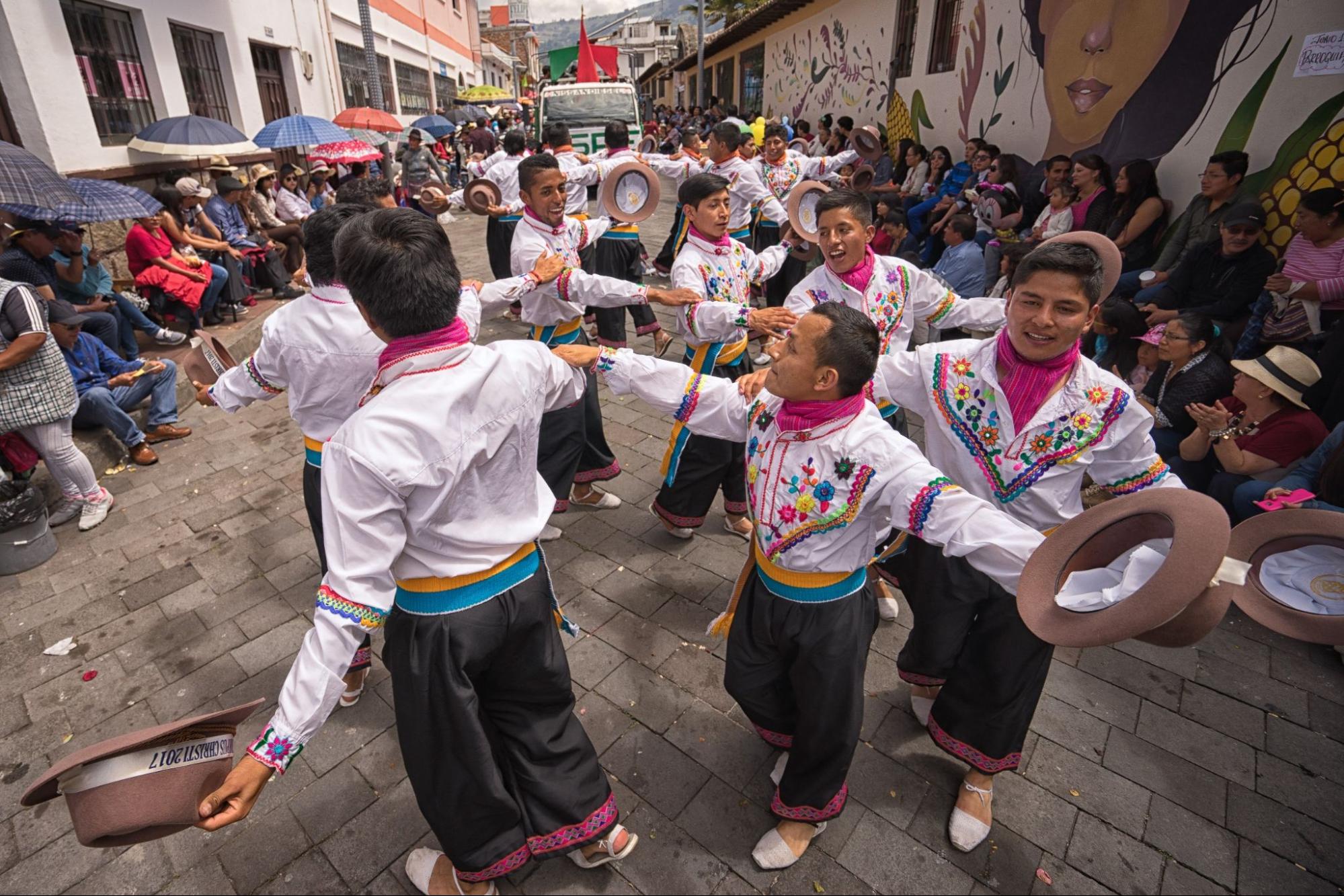
The Corpus Christi Festival is a day of contrasts. It begins with a solemn mass, but as the day progresses, the atmosphere becomes more lively and festive. There are parades, music, dancing, and food. And of course, there are the fireworks. The fireworks displays at the Corpus Christi Festival are some of the most spectacular in the world.
The heart of the Corpus Christi Festival is the Dancer of Pujilí. This character is dressed in a colourful costume and wears a mask with a long nose. The Dancer of Pujilí leads the parades and dances through the streets, bringing joy to everyone who sees him.
Inti Raymi, which translates to "Sun Festival" in Quechua, is a significant celebration in both Peru and Ecuador. Among the festivals in Ecuador, it stands out as one of the most vibrant and photogenic. Inti Raymi pays homage to the Sun god, Inti, and marks the arrival of the winter solstice.
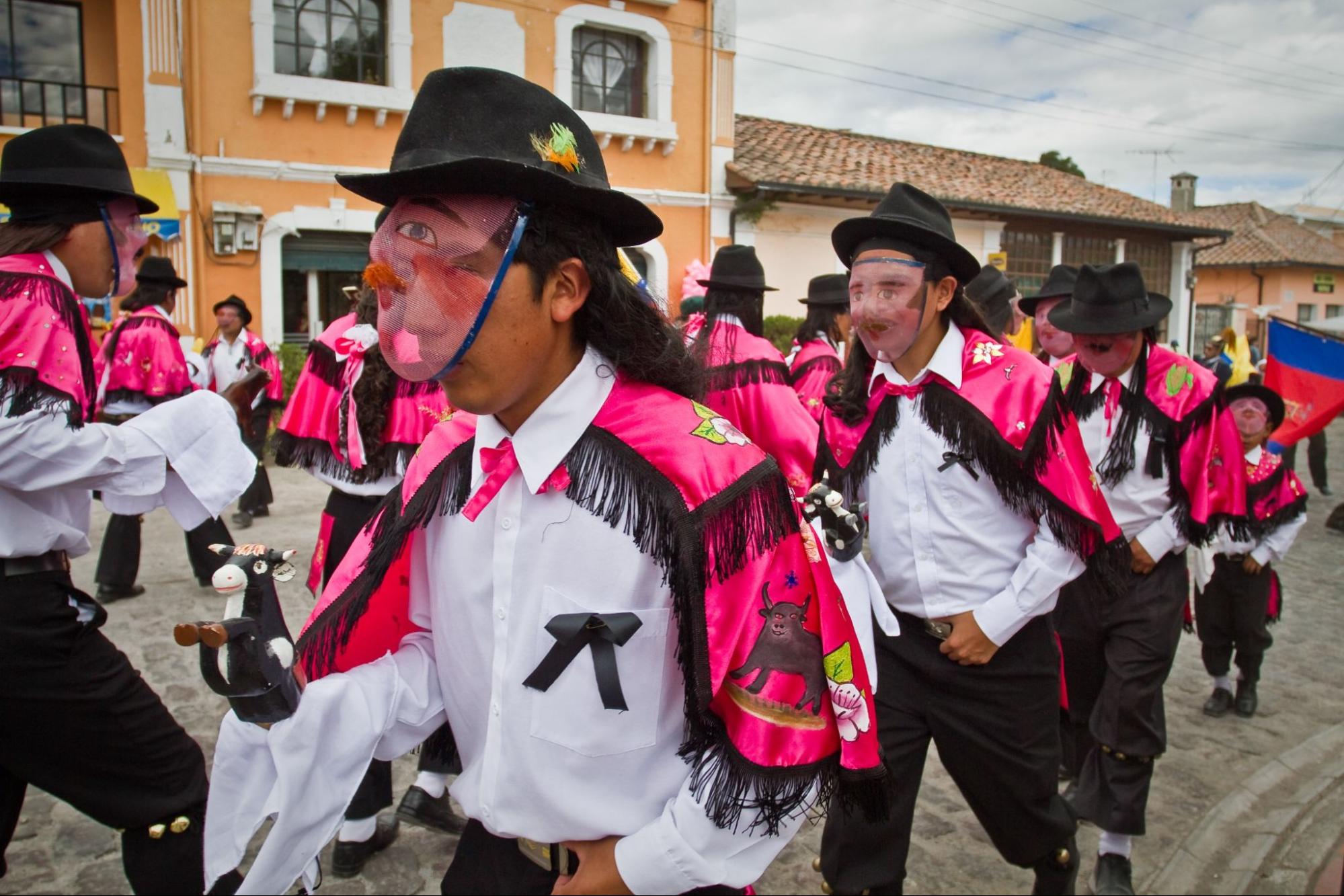
Inti Raymi takes place in the months of June and July, offering a rich tapestry of traditional customs and rituals. Participants immerse themselves in the festivities, featuring dance, song, and sumptuous feasts. The festival is a symbolic expression of the belief that the Sun god, Inti, brings a season of abundance and fertility to the land.
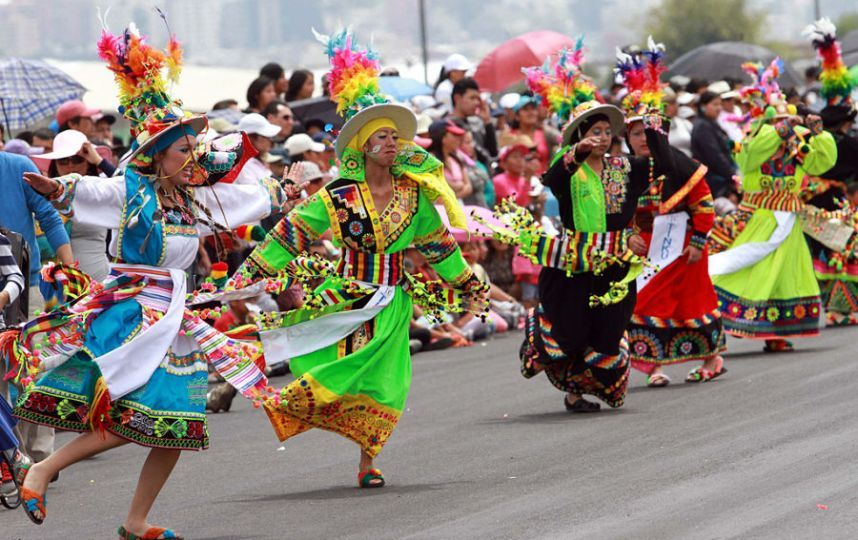
The roots of Inti Raymi run deep, harking back to the Incan Empire, where it was a major religious ceremony dedicated to their most significant deity. In those ancient times, the festival comprised a grand procession involving priests, nobles, and rulers, who paid homage to Inti and enjoyed the adoration of their subjects.
The Yamor Festival is a vibrant celebration of the sun, a central element in the cultures of Ecuador and other parts of South America. The festival takes place over three days in the month of September, and it is a time for people to come together and celebrate the commencement of the harvest season and the enduring significance of agriculture.
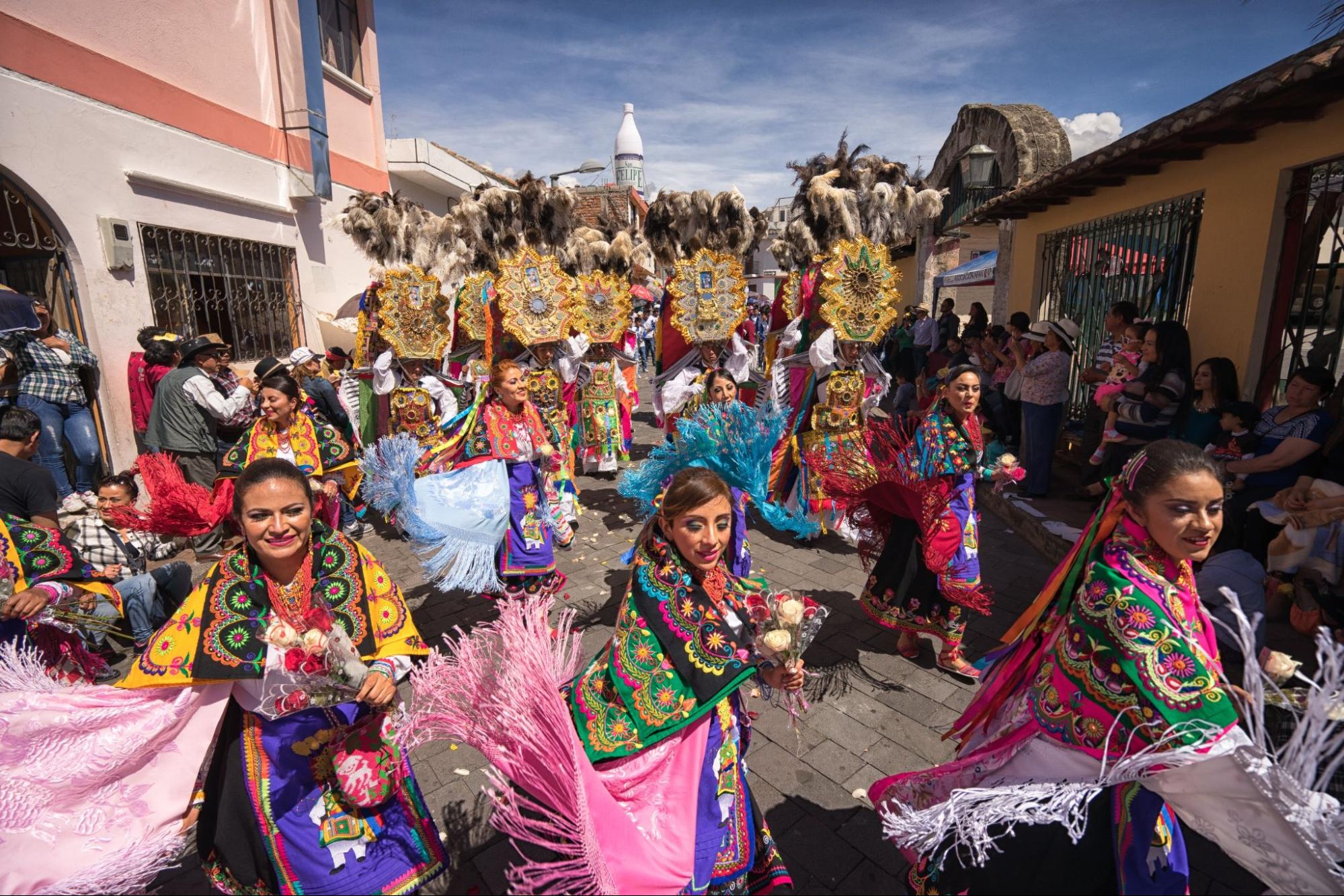
Corn festivals are held throughout Ecuador to celebrate the country's staple food. These festivals feature a variety of activities, including musical performances, traditional dances, lively parades, and spirited cooking competitions. These festivals are deeply ingrained in Ecuadorian culture and have been cherished for centuries.
The Festival of La Mama Negra is an annual extravaganza held in Latacunga, Ecuador, in the month of September. It is a grand celebration in honour of the city's patron saint, La Mama Negra, the Virgen de la Merced (Virgin of Mercy), and the city's independence anniversary.
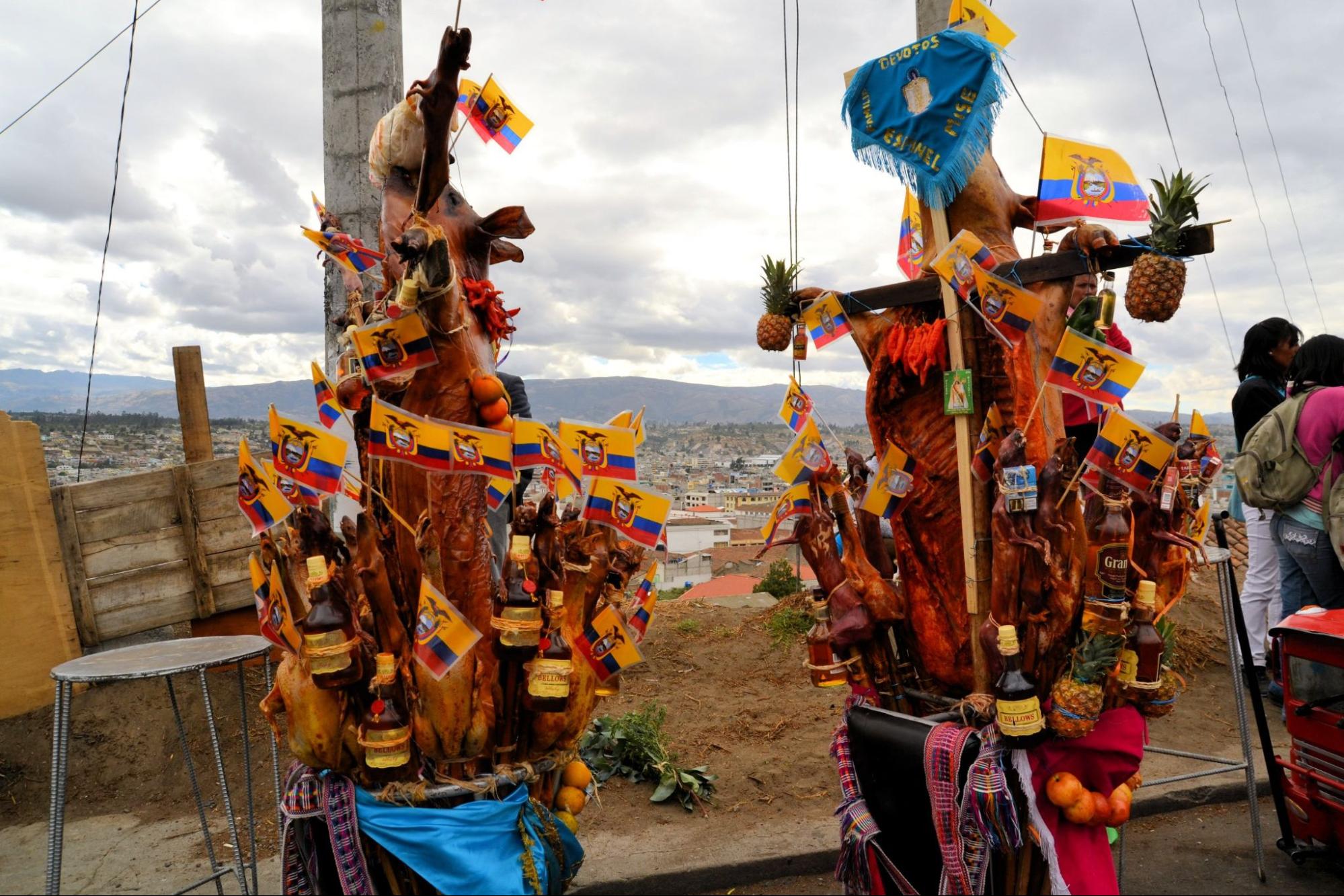
The festival is a unique cultural experience that blends elements of Spanish, indigenous, and African traditions. It is a time for people to come together and celebrate their faith, their culture, and their history.
The Festival of La Mama Negra is deeply rooted in religious faith. The Virgen de la Merced is a beloved patron saint of Latacunga, and the festival is an opportunity to express gratitude for her protection and miraculous intervention.
Fiestas de Quito, held in November and December, stand as one of the foremost annual celebrations in the city of Quito, Ecuador's largest urban hub. These festivities serve as an expressive reflection of the rich culture and enduring traditions of the city.
The Fiestas de Quito span an entire week, paying homage to the anniversary of the founding of Quito. This vibrant celebration offers an exceptional opportunity for international tourists to immerse themselves in the heart of Ecuadorian culture, replete with the enchanting trifecta of music, dance, and gastronomic delights. The city comes alive with parades, the election of the Quito Queen, and a host of other enjoyable activities.
The festivities encompass a diverse array of cultural expressions, from opera and folk musical performances to theatre shows and even bullfighting. This multifaceted celebration invites everyone to partake in the multifarious art forms that encapsulate Quito's vibrant heritage. It's a testament to the city's rich cultural tapestry, appealing to both locals and visitors alike.
Año Viejo, or the Old Year, is a cherished Ecuadorian tradition that marks the celebration of New Year's Eve. This festivity unfolds on December 31st, the eve of the New Year, and holds a unique symbolic significance. At its core, it involves the burning of a life-sized effigy, representing the "Año Viejo" or Old Year, as a poignant way of bidding farewell to the past year and symbolically leaving behind the trials and tribulations of yesteryear.
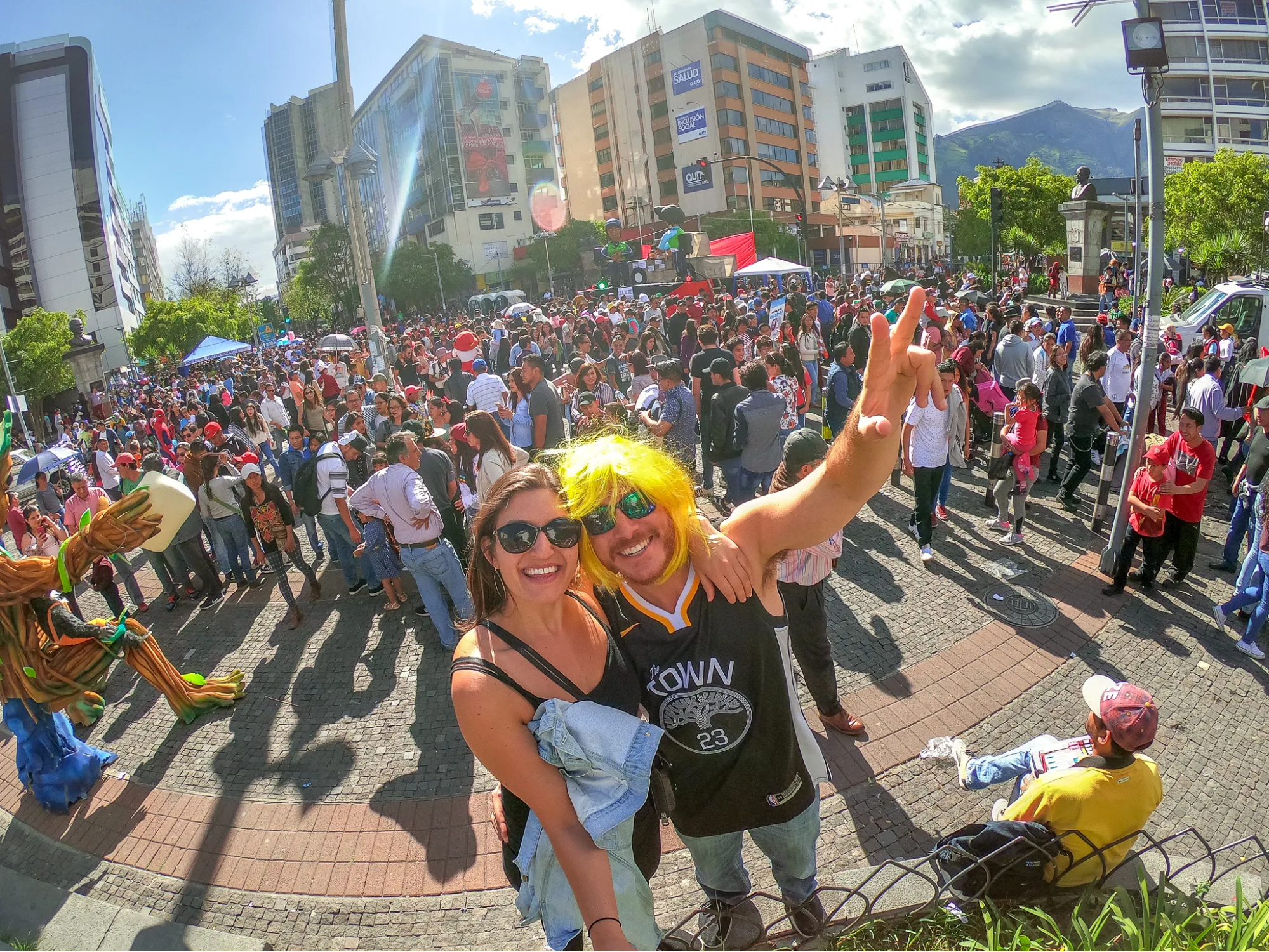
The focal point of the Año Viejo celebration is the creation of the Old Year effigy, a process that typically involves using dried grass, paper, and other flammable materials. This effigy serves as a vessel for small trinkets and fireworks, adding a layer of symbolism to the tradition.
Crafting the Old Year EffigyAs the clock approaches midnight, the Old Year effigy takes its place in the heart of the town or village, awaiting its fiery destiny. When the clock strikes midnight, an enchanting transformation occurs as the effigy is set ablaze. In this moment, the entire community comes together to partake in the festivities. Fireworks light up the night sky, music fills the air, and lively dances ensue, creating a joyful and unforgettable celebration.
Crafting the Old Year EffigyWhat are some of Ecuador's top tourist festivals?
Ecuador hosts several vibrant and culturally rich festivals that attract tourists from around the world. Some of the top tourist festivals in Ecuador include Inti Raymi, La Diablada de Píllaro, the Ecuador Carnival Festival, and the Yamor Festival. These celebrations offer a unique opportunity to experience the country's culture, traditions, and festivities.
When does the Inti Raymi festival take place in Ecuador?
The Inti Raymi festival is celebrated in June and July, marking the arrival of the winter solstice. It is a significant celebration that pays homage to the Sun god Inti.
What is the significance of La Diablada de Pillaro?
La Diablada de Pillaro is an annual festival held in January in Píllaro, Ecuador. It features a traditional dance party known as the Diablada, where dancers represent devils, angels, and animals in a performance that symbolises the battle between good and evil. It is considered a showcase of Píllaro's culture and identity.
What happens during the Ecuador Carnival Festival?
The Ecuador Carnival Festival, known as the Ecuadorian Mardi Gras, is celebrated with vibrant music, water balloon games, colourful parades, and lively dancing. It takes place in the weeks leading up to Ash Wednesday and is a time for people to come together, share food, and enjoy the festivities.
What is the Yamor Festival, and when does it occur?
The Yamor Festival is an annual celebration of the equatorial sun that takes place in Ecuador in September. This festival features traditional music, dance, cultural events, and crafts. It is a time to celebrate the start of the harvest season and honour the Sun god Inti.